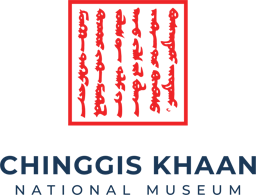
THE FIRST POPULATION HISTORICAL DOCUMENTS OF MONGOLIA KEPT IN POLAND HAVE BEEN PUBLISHED
Written and material artifacts related to Mongolian history and culture are preserved in archives and libraries around the world.
The Director of the Chinggis Khaan National Museum, Academician S. Chuluun, Agata Bareja-Starzyńska, Professor of the University of Warsaw, the Polish Academy of Sciences, and the Archives of the Academy of Sciences, have published a 9-volume book entitled “Materials for the Population Census of Mongolia (1915-1916)”. This work combines the population and statistical documents from 1915-1916 that are kept in the archives of the renowned Mongolian scholar, Professor Władysław Kotwicz. The book was launched today (2025.05.09).
Under the guidance of the economic advisor of the Mongolian government, Kozin, and with the funding from the Bogd Khanate of Mongolia, the population and statistical documents related to Mongolia from 1915-1916 have been published after 110 years. These documents were taken to St. Petersburg to conduct detailed economic and population records of the Mongolian provinces (aimags). A significant portion of these records is preserved in the Archives of the Polish Academy of Sciences, while the remaining part is kept in the Archive of the Institute of Oriental Manuscript Russian Academy of Sciences. These population and statistical records are considered one of the largest and most significant economic and population surveys of the early 20th century, conducted after Mongolia declared its independence. The director of the Chinggis Khaan National Museum and academician S. Chuluun highlighted the importance of these materials during the book's launch.
The compilation and publication of the work was carried out in collaboration with researchers from the University of Warsaw: Agata Bareja-Starzyńska, Jerzy Tulisow, and Ewa Gmurzynska and young researchers from the University of Warsaw.
The population census materials were collected in 1915–1916 in over 40 districts (khoshuud) of the Khalkh Sain Noyon Khan, Zasagt Khan, Tushiyet Khan, and Setsen Khan provinces (aimag). These records involve sampling and documenting the population of each district, conducting detailed studies of economic practices, and providing comprehensive reports on the local khans, written in both Russian and Mongolian. The census also closely examined the nomadic movements, monasteries, and historical and cultural landmarks, making it a valuable and detailed historical document.
There were no researchers in Mongolia has utilized this material for further study.
The books have been presented to the National Library of Mongolia, the Institute of History and Ethnology, the Institute of Archaeology, Mongolian Academy of Sciences, the Parliamentary Library, the National Statistical Committee, the National Archives of Mongolia, and to representatives of academicians and scholars.
This publication is particularly significant as it coincides with the 75th anniversary of the establishment of diplomatic relations between Mongolia and Poland.
